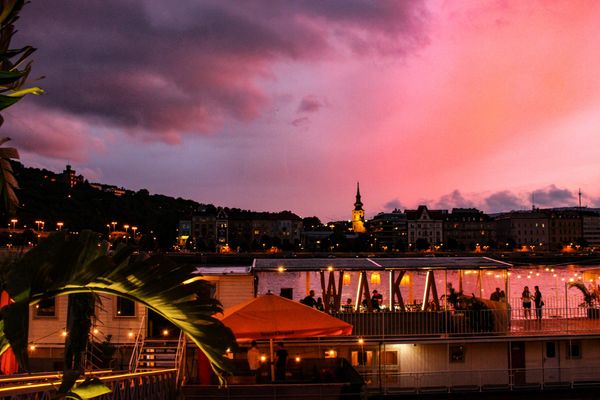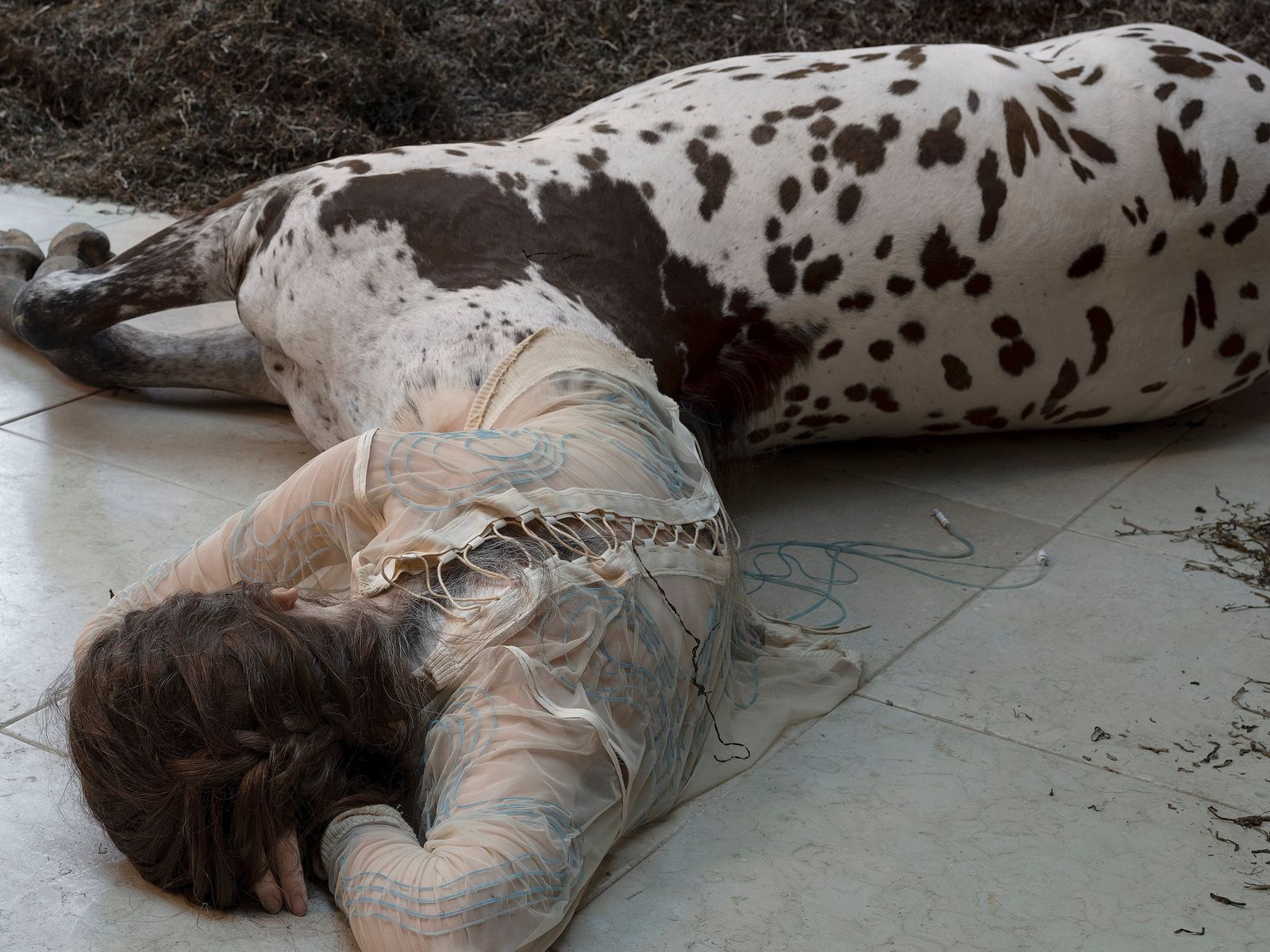This year’s 59th Venice Biennale was born during the pandemic, so, unconventionally, it was largely organized online. The result, laced together by the evocative title Milk of Dreams, borrowed from Laura Carrington’s book, is an imaginary journey through physical space, full of surreal, dreamlike elements and sci-fi-themed installations. Each individual project explores the shifting definition of humanity through the metamorphosis of bodies, machines, and nature, seeking new ways of coexistence that distance themselves from anthropocentrism, or the human-centered view of the world.
Our top 5 selection presents our favorite exhibitions from the Giardini National Pavilions: exhibitions that stood out from this vast multisensory pulse-load, either for their visuality, their concept, or their radically stripped-down nature.
We immersed ourselves in the universe of the Biennale, where the pavilions appear as distinct episodes of a vivid dream, sometimes fully disconnected, in other cases more closely linked to the title and reality. It is also important to emphasize that this year, for the first time in the 127-year history of the Biennale, there was a female dominance, to which Chief Curator Cecilia Alemani and the exhibitors of the Hungarian Pavilion, Zsófia Keresztes, and Mónika Zsikla have all contributed. In addition, several major countries ceded their pavilions to smaller nations and ethnicities, further amplifying the space for alternative narratives and realities.
Hungarian Pavilion | After Dreams: I Dare to Defy the Damage
The Hungarian Pavilion is particularly well suited to the the main curatorial concept: ethereally aesthetic anthropomorphic creatures covered in mosaics flow into each other like dissolved bodies or fluid identities. “We dreamed up a path lined with bodies looking for their final form as a string of beads on an endless track of “rails”. The figures are actually freeze-frames depicting the different stages and possibilities of the formation of a personality. They work against themselves as well as for each other. They pulsate between destruction and creation, connection and detachment, while constantly interacting with each other,” Zsófia Keresztes told us in an earlier interview. The “pixel” covered sculptures also speak of interconnectedness and alienation, a poignant reflection on the challenges of our present. In a world created by digitalization and the pandemic, being online has become a must, one of the most important arenas for human interaction. And our online persona is sometimes detached from, sometimes intertwined with our personality. Among the inspirations for the exhibition emerges the reference to Antal Szerb’s classic novel, Journey by Moonlight, and the mosaics also echo the Art Nouveau tiles of the Hungarian Pavilion building, creating a bridge between rationality, fiction, past, and future. Although the sculptures create a bizarre atmosphere, the pastel colors and shimmering mosaics counterbalance the overall effect, so that visitors (unlike with many pavilions) can leave with a sense of joy.
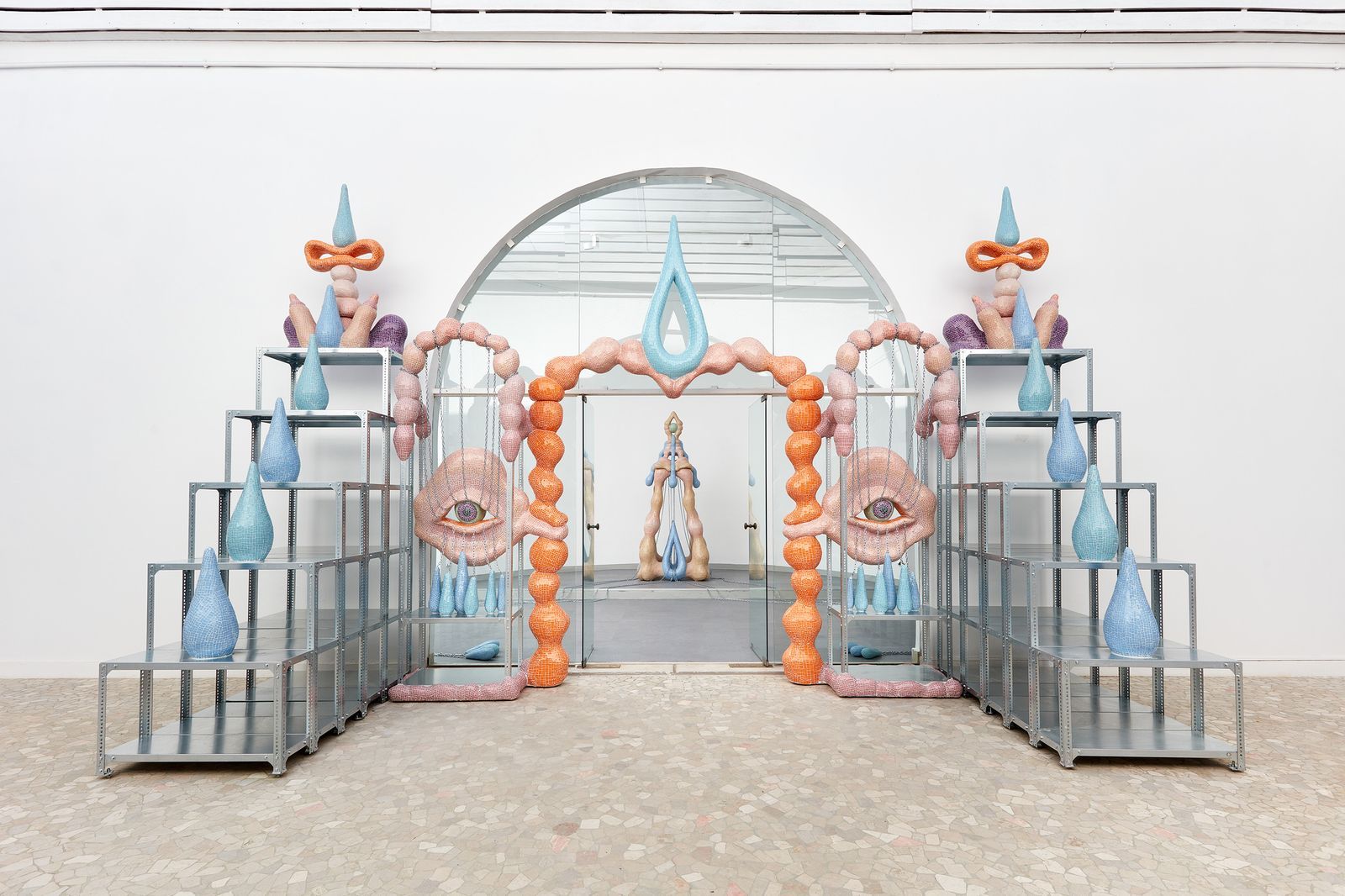

Danish Pavilion | We walked the Earth
The Danish Pavilion has become one of the most striking installations at this year’s Biennale. Its hyper-realism is unsettling, while its narrative leaves the visitor with a multitude of questions. Curator Jacob Lillemose and artist Uffe Isolotto present a drama of life and death. The tragedy of the characters is felt in your bones, yet you are left with no answers to what happened. Spread across the different spaces of the pavilion, the work reflects on Danish farm life, but where traditional farming tools become sci-fi reinterpretations and family members are transhuman corpses resembling centaurs. In one room lies a sprawled female character, with ghostly, bloodshot eyes, in the process of giving birth to yet another hybrid. In another room, a male has taken his own life. “There is profound uncertainty in understanding what happened to the centaurs and the world they live in. Is the situation tragic, hopeful, or perhaps both? (…) The present in which we live is becoming increasingly complex and unpredictable, and we are faced with many challenges, whether ecological, political, or existential. There is a lot of hope and despair in the air, and I want to make it a physical reality with this installation,” said the artist of this work of speculative nature.
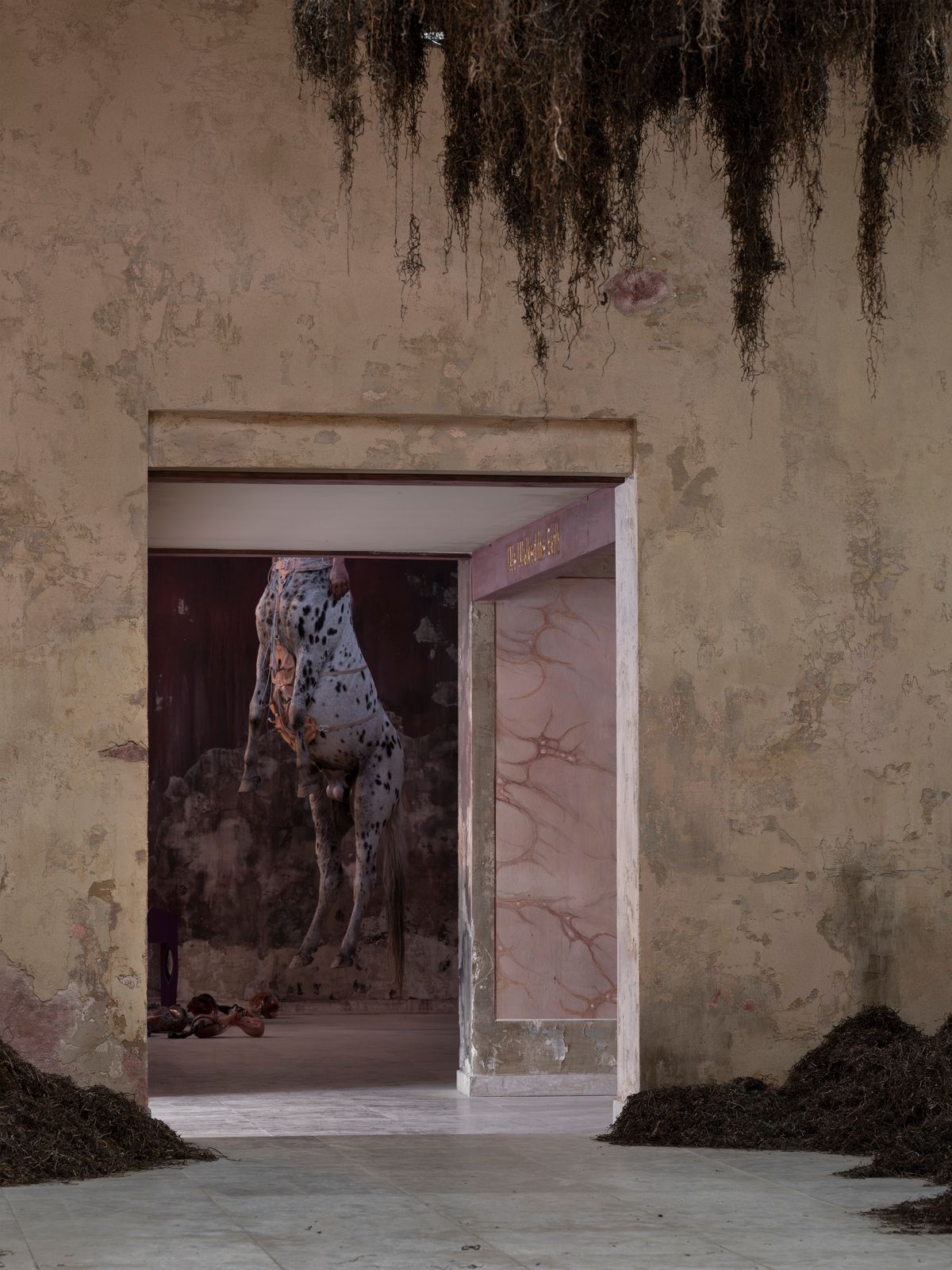

Austrian Pavilion | Invitation of the Soft Machine and Her Angry Body Parts
If the Danish exhibition was the most stirring, the Austrian Pavilion was the fresh breeze of the Biennale, injecting humor and playfulness into the inspiring but often depressing flow of pavilions. Curator Karola Kraus, director of the mumok (Museum of Modern Art) in Vienna, curated a multidisciplinary stage with queer artist duo Jakob Lena Knebl and Ashley Hans Scheirl. The title originates from a 1960s novel by William Burroughs, in which the author referred to man as a soft machine, constantly besieged by a vast, hungry parasitic army. The artists have built on the rigid symmetry of the Austrian Pavilion, dividing the space in two, while breaking down this architectural rigidity with their communicating, ironic works. The exhibition addresses, among other things, the mechanisms of identity construction and questions of design culture, completely dismantling the hierarchy of design and art. At the same time, desire and sensual experience play a major role in the retro-sci-fi-inspired interior, where the viewer also becomes a participant.

German Pavilion | Relocating a structure
What’s interesting about the last two pavilions on our list is that they would be equally at home at next year’s Architecture Biennale as they were at this year’s Fine Arts one. Yet their presence was a relevant reflection of the current line-up, serving as a mirror for some of them. Maria Eichhorn’s project focuses on the history and architectural transformation of the German Pavilion, which was built in 1909 as the ’Bavarian Pavilion’, renamed the German Pavilion in 1912, and then given a new façade and imposing, even intimidating architectural elements in 1938 in the name of the fascist aesthetic. Although the Pavilion was remodeled once again after the war, the building had never fully rid itself of its fascist design. Eichhorn aims to reveal the original pavilion, and thus traces of the past, by showing what the whitewashed walls hide away. There’s something unsettling about seeing a classic building ’gutted’, as subconsciously most of us long to cover up all problems. With this gesture, the artist adds to the space by opening up its deep layers, thus in effect taking away from it.

Spanish Pavilion | Correction
At first glance, the Spanish Pavilion is a completely empty space, as if the exhibition had been left out and the building’s interior and its lights were presented by themselves. Ignasi Aballí’s concept, although based on a simple idea, is more complex than that. The artist has installed extra internal walls that rotate the building at a 10-degree angle to ’correct’ it. He does this because the Spanish Pavilion is slightly at an angle to the Dutch and Belgian buildings next to it. The action thus disrupts spatial memory and changes the position of the building in relation to its surroundings. This raises questions of adaptation, comparison to, and coexistence with one another, and of correcting past choices. It creates an alternate reality that is eerily similar to the present, yet the small details create distance between them. The thought-provoking end result, meanwhile, creates a meditative atmosphere where it feels good to rest our eyes and minds after pavilions overflowing with impulses.
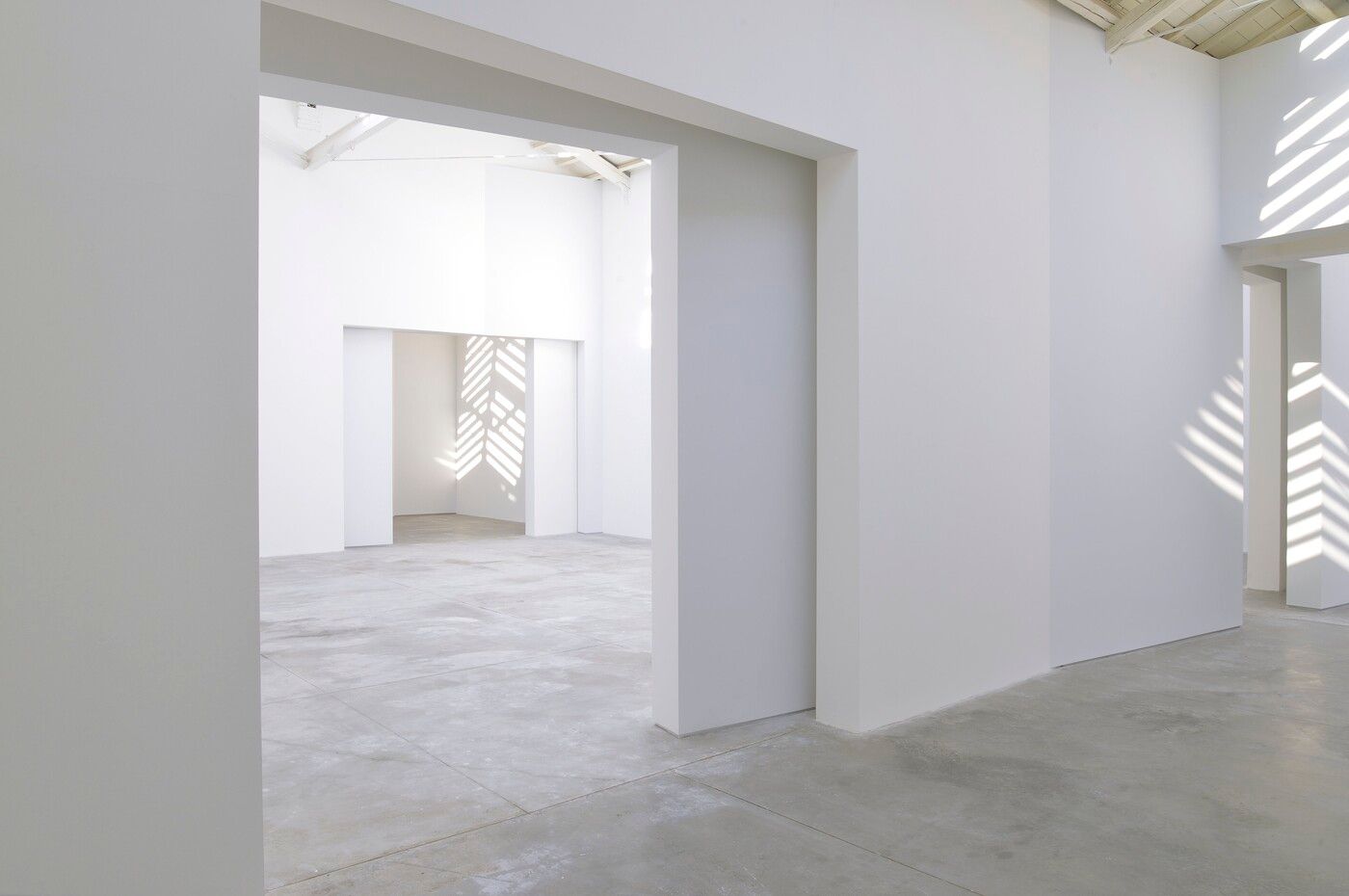

When the present embraces tradition | Urban Betyár

Central and Eastern European countries should join forces
